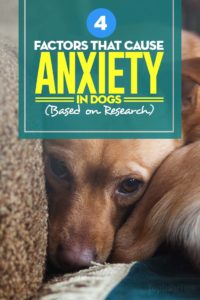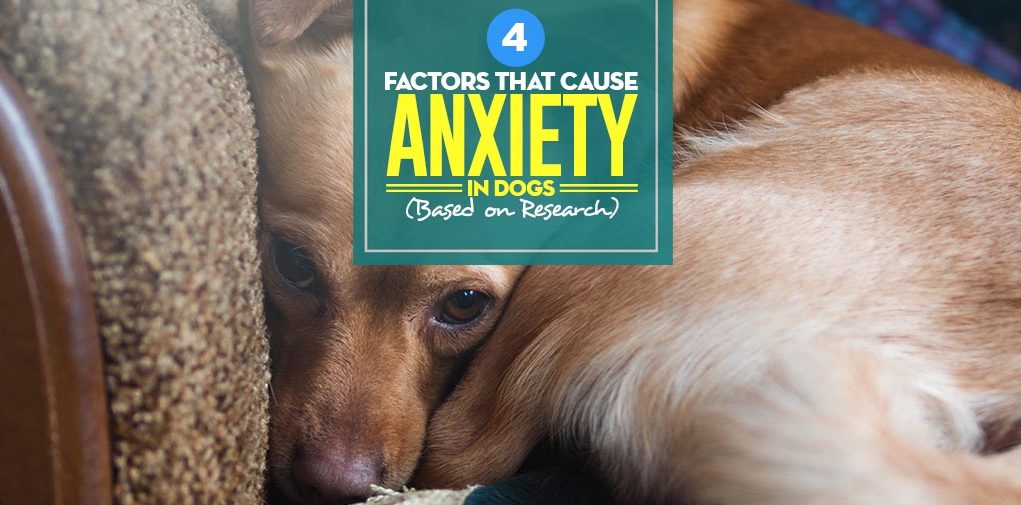Most dog owners understand the importance of a nutritious diet and daily walks for a dog’s general welfare, but how many dog owners know the factors that may affect a dog’s psychological welfare? Anxiety in dogs is a real condition, and if you leave it untreated you may end up very unhappy. Anxious dogs have bathroom issues, behavior problems and may even become aggressive.
While the idea of your dog popping a Paxil with his kibble may seem absurd, domestic dogs have been diagnosed with many well-known anxiety disorders, such as generalized anxiety disorder, phobias, and separation anxiety. There is certainly a large genetic component to these anxious personality traits, but environment plays a key role.
Because a dog’s environment can be largely controlled by its owner, it is important for dog owners to understand the environmental factors that contribute to anxious behavior in dogs. Understanding the science behind this condition may help owners realize the severity of it and the importance of treatment.
ALSO READ: 7 Proven Ways to Calm Down A Dog (Backed by Science)
Science of Anxiety in Dogs
4 Causative Factors (Based on Research)
1. Early life experiences & maternal care
Like humans, early life experiences seem to play a role in the development of anxious behavior in dogs. Specifically, between the ages of 3 and 12 weeks, dogs seem to be particularly sensitive to life experiences and their environment. One of the experiences that affects fearfulness the most is poor maternal care.
In other words, if the mother does not adequately care for her puppy, that puppy is much more likely to grow up fearful and anxious. This makes sense. If a puppy cannot trust its own mother, it will have difficulty trusting anyone or anything else.
Unfortunately, this may be an environmental factor that cannot be controlled as easily by the owner. Most owners have limited access to a puppy during this stage of its life.
2. Early socialization
 The other factor that strongly affects anxiety in dogs is socialization during the first three months of the puppy’s life. The less opportunities a puppy has to socialize with other dogs and humans, the more fearful they are likely to be.
The other factor that strongly affects anxiety in dogs is socialization during the first three months of the puppy’s life. The less opportunities a puppy has to socialize with other dogs and humans, the more fearful they are likely to be.
This also makes sense. Like humans, dogs are likely to fear the unknown. Socialization gives puppies the opportunity to learn what the world is like, and that, for the most part, there is very little to be afraid of in everyday life. Taking a puppy to the park and allowing him to romp and play around other dogs and people teaches him that it is safe and fun to be out in the world.
PODCAST: How To Soothe A Dog's Anxiety with Music
3. Exercise
Because the positive effect exercise has on anxiety and depression in humans and animals has been well-established, it is no surprise that a similar effect was found in dogs. Dogs with noise sensitivity (a fear of loud noises) and separation anxiety (a fear of being separated from its owner) had significantly less daily exercise than dogs that did not show these traits.
Because the amount of daily exercise a dog gets is almost entirely controlled by the owner, it is important for dog owners to understand the impact of exercise on anxiety. The effect of exercise on anxiety could be explained in a number of ways.
Biologically, exercise increases the production of serotonin in both humans and animals, so exercising regularly is similar to popping a Paxil. Socially, a dog’s exercise is usually taken in the form of a daily walk outside, which exposes them to other dogs and other people.
As stated earlier, the more social experiences a dog has, the less anxious they seem to be. Further, the more you exercise with your dog, the more quality time you are spending interacting with your dog. If you spend a lot of quality time with your dog, your dog is less likely to feel lonely or anxious when you are away.
RELATED: Top 15 Best Dog Anxiety Aids for Calming
4. Number of dogs and adults in the household
Another factor that affects anxiety in dogs that is largely within the owner’s control is how many dogs are in the household. It was found that fearful dogs were often the only dog in their household.
It has long been understood that humans with social support deal better with stress, so it is not that surprising that dogs would also benefit from daily canine companionship. Regardless of how much time an owner spends with his dog, a human friend cannot provide the same level of support to a dog as a friend of the same species.
Think about it: no matter how much we may love our pets, we still need human friends to be complete. Why would dogs be any different?
Conversely, when there were multiple adults in a household, dogs were more anxious and fearful. This finding is not as easily explained. Perhaps these dogs experience a sense of being overpowered.
 Children tend to get down on the ground to play and interact with a dog, whereas adults often speak to a dog from way above the dog’s head, and are more associated with discipline. Although an owner may not be able to control how many adults live in the household, an owner could limit how many adults are in the room with the dog at a time, or try squatting down to speak to the dog to ease some of its anxiety.
Children tend to get down on the ground to play and interact with a dog, whereas adults often speak to a dog from way above the dog’s head, and are more associated with discipline. Although an owner may not be able to control how many adults live in the household, an owner could limit how many adults are in the room with the dog at a time, or try squatting down to speak to the dog to ease some of its anxiety.
In summary
There are many factors that may contribute to anxiety in dogs. The largest factors are poor maternal care, lack of early socialization, and lack of exercise. Because exercise is the factor most easily controlled by the owner, and exercise incorporates a social component, it is important for dog owners to spend a significant amount of time exercising with their dogs if they wish their dogs to live anxiety-free.
READ NEXT: Top 5 Best Dog Anxiety Vests














